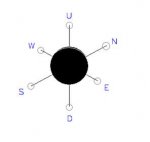- Joined
- Apr 17, 2002
- Messages
- 71,348
Re: Cryo-Treated Alpha 1 + 383 Stroker: Thoughts, Q&A?
Ayuh,..... What Hull are We playing with here anyways,..??
I see 18' mentioned, but don't find what the hull is,..??
I see you'll be runnin' in Freshwater,... Not much Ocean in Kansas.....
You're wasting to much energy,+ Weight with the closed cooling,...
A SBC run in Freshwater, wintered Dry, will Never have block or head issues because of it, rather than a Closed system...
As young as you are, if you keep the boat til you die, the Block will outlast you.....
For the Cyro treating,... I'd probably go for the vertical shaft,+ All the forward gears....
'course, to remove those parts for Treating,... You gotta take the drive apart,+ put it back together,...
The Speciality Tools, seals,+ whatnots will set you back the price of a New Merc drive,... Not the cheap SEIs...
It'd be cheaper all round to just swap in a New SEI drive every year or 2...
Gotta know what Hull We're talkin' about though...
Location: Bonner Springs, KS
Concerning the radiator, it is not an issue of waterflow, it is an issue of running water, be it salt or fresh, through my engine block.
Ayuh,..... What Hull are We playing with here anyways,..??
I see 18' mentioned, but don't find what the hull is,..??
I see you'll be runnin' in Freshwater,... Not much Ocean in Kansas.....
You're wasting to much energy,+ Weight with the closed cooling,...
A SBC run in Freshwater, wintered Dry, will Never have block or head issues because of it, rather than a Closed system...
As young as you are, if you keep the boat til you die, the Block will outlast you.....
For the Cyro treating,... I'd probably go for the vertical shaft,+ All the forward gears....
'course, to remove those parts for Treating,... You gotta take the drive apart,+ put it back together,...
The Speciality Tools, seals,+ whatnots will set you back the price of a New Merc drive,... Not the cheap SEIs...
It'd be cheaper all round to just swap in a New SEI drive every year or 2...
Gotta know what Hull We're talkin' about though...




















